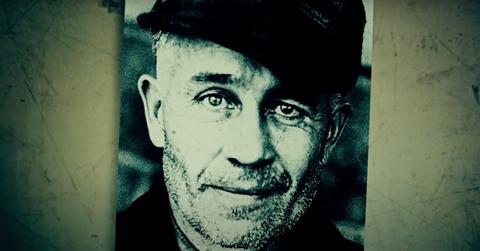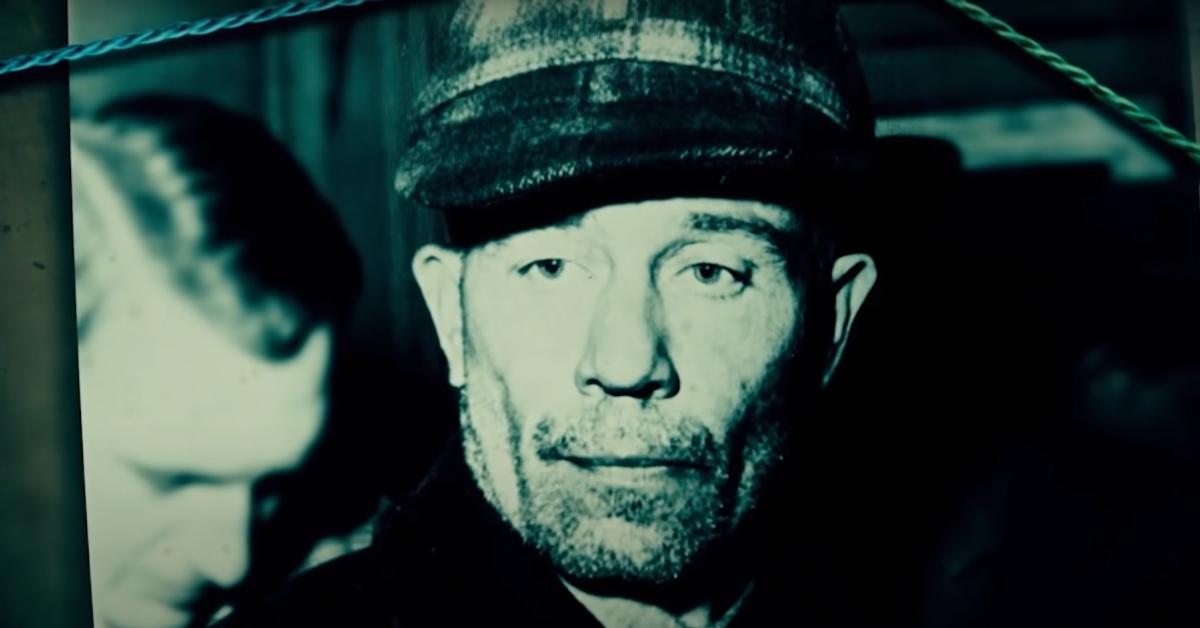Ed Gein Was Given the Nickname the Butcher of Plainfield — What Did He Do to Earn It?
"I was sort of in a daze-like."
Updated Aug. 28 2025, 11:29 a.m. ET
In 2019, tapes of an interview with Ed Gein were unearthed and later turned into a documentary titled Psycho: The Lost Tapes of Ed Gein. They were originally recorded in 1957, soon after Gein was arrested and charged with murder. When police searched his home, they stumbled upon a literal house of horrors.
If you ignored the subject matter of the recorded interrogation, you would think Gein was discussing the weather. He calmly answered every query in a voice that suggested he had no idea that what he was saying was gruesome beyond belief. In fact, Gein himself seemed to be perplexed by his own actions. So, what did Ed Gein do? More than you could possibly imagine.
What did Ed Gein do? He turned skin and bones into home decor.
Before Gein was outed as a murderer and necrophiliac, he was known as the local recluse in the small town of La Crosse, Wisc. He and his older brother Henry were raised by their fanatical mother, Augusta Gein, who taught them that women were a sin. Augusta did not hide the fact that the younger Gein was her favorite son. In 1944, Henry died, and a little over a year later, Augusta followed, leaving Gein alone in the house he had still shared with his mother.
Gein was 39 years old when Augusta died and was devastated by this loss. According to Time Magazine, he closed off the room where she died as well as the sitting room, and turned them into a mausoleum of sorts. For the next decade, Gein worked odd jobs while keeping to himself. Things changed on Nov. 16, 1957, when Gein shot and killed general store owner Bernice Worden, 58, then took her body back to his home.
Police quickly figured out Gein was involved when they found a receipt for antifreeze Worden had written and left on the counter. Gein had been in the store earlier that day and said he would be back to purchase some. Nothing could have prepared authorities for what they found at Gein's house. Worden's body was "strung up by the heels in a summer kitchen," reported Time. There were also fragments of human bones, a trashcan/chair/leggings made of human skin, a belt made of female nipples, and more.
While being interrogated, Gein also confessed to murdering 54-year-old Mary Hogan, a "divorcée tavern keeper who had disappeared from nearby Bancroft three years before." When asked about what police found in his house, Gein could only say, "I was sort of in a daze-like." These are the only two murders officially connected to Gein. He claimed to have made the items in his home from body parts he dug up at nearby cemeteries.
What happened to Ed Gein?
Gein's lawyer entered a plea of not guilty by reason of insanity. He was later diagnosed with schizophrenia and was deemed unfit to stand trial. For the next 14 years, Gein spent time in two state hospitals until he was able to stand trial in 1968. The legal proceedings lasted one week, after which a judge found Gein guilty by reason of insanity, per History.com. The Butcher of Plainfield was returned to a mental health facility.
On July 26, 1984, Gein died of a respiratory ailment at the Mendota Mental Health Institute, at the age of 77, reported The New York Times. The announcement goes on to give a brief description of the person he was and the crimes he committed. When eulogizing a killer who kept to himself before he was caught, it's hard to say much else.
One person who has something to say about Gein is Ryan Murphy, whose third season of Monster will focus on the killer, his crimes, and the movies they inspired. Images teasing the series were shared by Murphy on Instagram and show actor Charlie Hunnam, who plays Gein, wielding a chainsaw. This is undoubtedly a nod to The Texas Chainsaw Massacre, which was loosely based on the killer's depraved actions.


